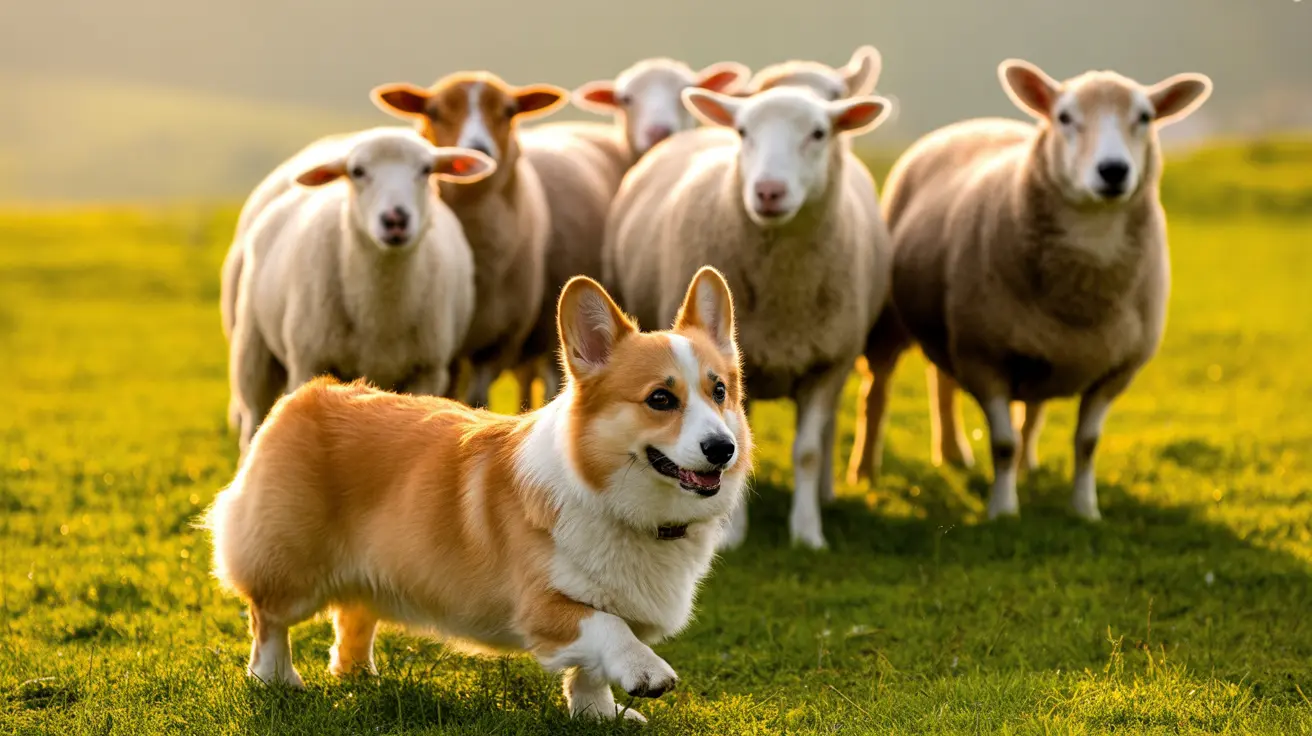When you think of Corgis, you might picture their adorable short legs and friendly smiles, or perhaps their strong association with the British Royal Family. But there's often confusion about whether these charismatic dogs were originally bred for hunting. Let's dive deep into the fascinating history and true purpose of the Corgi breed.
While Corgis possess some traits that could make them capable hunters, their primary historical role was quite different. These intelligent and agile dogs were specifically bred as herding specialists, not hunting companions. Understanding their true heritage helps explain their unique characteristics and behaviors that we see today.
The True Origins of Corgis
Corgis have ancient roots dating back over 3,000 years, with the Cardigan Welsh Corgi being one of Britain's oldest dog breeds. These dogs were brought to Wales by Celtic invaders who introduced Teckel-type dogs from Central Europe around 1200 BC. Their importance was so significant that they were mentioned in Welsh laws as early as 920 AD.
There are two distinct types of Corgis: the Cardigan and the Pembroke. While they share some similarities, their ancestral lines differ significantly. The Cardigan Welsh Corgi has connections to the Teckel/Dachshund family, while the Pembroke Welsh Corgi likely descended from Spitz-type dogs brought by Vikings or Flemish weavers.
Corgis as Herding Specialists
Despite their small stature, Corgis were bred specifically for herding cattle and sheep. Their low-set body and powerful legs made them perfect for nipping at livestock's heels while avoiding kicks from larger animals. This herding instinct remains strong in modern Corgis, often manifesting in their tendency to herd family members, including children and other pets.
Their role as herding dogs required intelligence, agility, and stamina – traits that might seem suitable for hunting but were actually refined for managing livestock. Corgis would work tirelessly, driving cattle from Welsh farmlands to markets across long distances.
Historical Working Roles Beyond Herding
While herding was their primary function, Corgis served multiple roles on Welsh farms. They acted as vigilant watchdogs, protecting both livestock and property from predators and intruders. Some historical accounts suggest that certain Corgi ancestors might have assisted in wildfowling along the Welsh coast, but this was not their primary purpose.
Their versatility and intelligence made them valuable all-around farm dogs, capable of adapting to various tasks while maintaining their core herding responsibilities.
Modern Capabilities and Limitations
Today's Corgis retain many of their ancestral working traits, though most serve as companion animals. While they possess keen noses and good agility, their instincts are more aligned with herding than hunting. Their natural tendency to bark and nip at movement – perfect for herding – could actually be counterproductive in hunting scenarios.
However, these intelligent dogs excel in modern dog sports and activities that channel their working heritage, such as agility trials, obedience competitions, and herding tests.
Frequently Asked Questions
Were Corgis originally bred as hunting dogs or primarily as herding dogs?
Corgis were primarily bred as herding dogs, specifically developed to drive cattle and sheep. Their physical characteristics and instincts were refined over centuries for herding, not hunting purposes.
Can Corgis be trained to assist in hunting small game like rabbits or birds?
While Corgis are intelligent and trainable, their herding instincts and tendency to bark make them less suitable for hunting activities. They weren't bred for the stealth and pointing behaviors typical of hunting dogs.
What historical roles did Cardigan and Pembroke Welsh Corgis play on farms besides herding?
Besides herding, Corgis served as watchdogs, protecting livestock and property. They were also valued companions to farmers and their families, helping with various farm tasks and alerting to potential dangers.
How do the hunting-related traits of Corgi ancestors influence the breed today?
While some Corgi ancestors may have had hunting capabilities, modern Corgis primarily display herding-related traits. Their keen sense of smell and agility are more commonly channeled into herding activities and dog sports.
Why are Corgis more suited to herding and companionship rather than traditional hunting activities?
Corgis' physical build, instinctive behaviors (such as heel nipping and barking), and centuries of selective breeding for herding make them naturally more suited to herding and companionship roles rather than hunting activities.
Conclusion
While Corgis possess some attributes that could theoretically make them capable hunters, their true heritage lies in herding. These beloved dogs were purposefully bred over centuries to be exceptional herding specialists, and this remains evident in their behavior and instincts today. Understanding their true purpose helps owners better appreciate and work with their Corgi's natural tendencies, whether as a family pet or in dog sports that showcase their impressive herding heritage.






